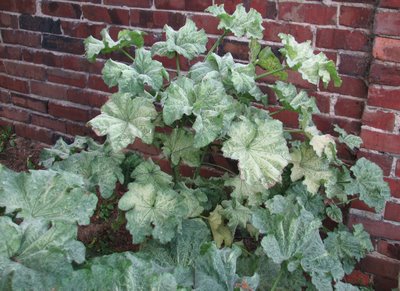
Walking down to the village shop in Sedlescombe, East Sussex today I was surprised to see a perfect fruiting body of a
red cage fungus,
Clathrus ruber.
It was growing among grass at the base of a hedge by a well trodden path close to the main road and it is the first time I have ever seen one.
Roughly the size of a tennis ball, this strange vegetable is a type of stinkhorn and does have a very bad smell to attract the flies that spread the spores found in the gooey black slime inside the lattice. From a distance it did not look like a living thing at all but more of a convoluted and twisted piece of plastic the product, maybe, of a 5 November bonfire.
The red cage is another one of these 'Mediterranean' species that are extending their range supposedly due to the warming of the climate and has followed very much the same route as the
ivy bee,
Colletes hederae, appearing first in the Channel Islands then later along the south coast and the West Country. I have not yet found any previous Sussex records, but I am sure there are a few and would be interested to hear from anyone if they know of any.



